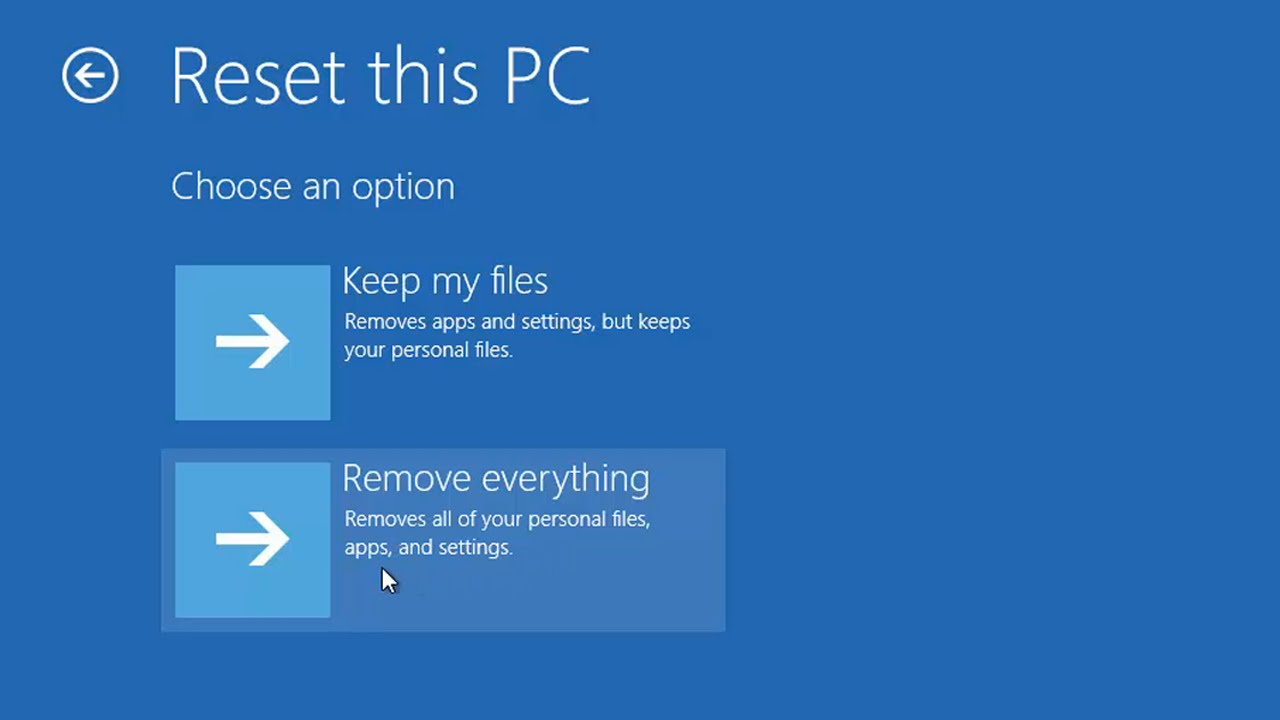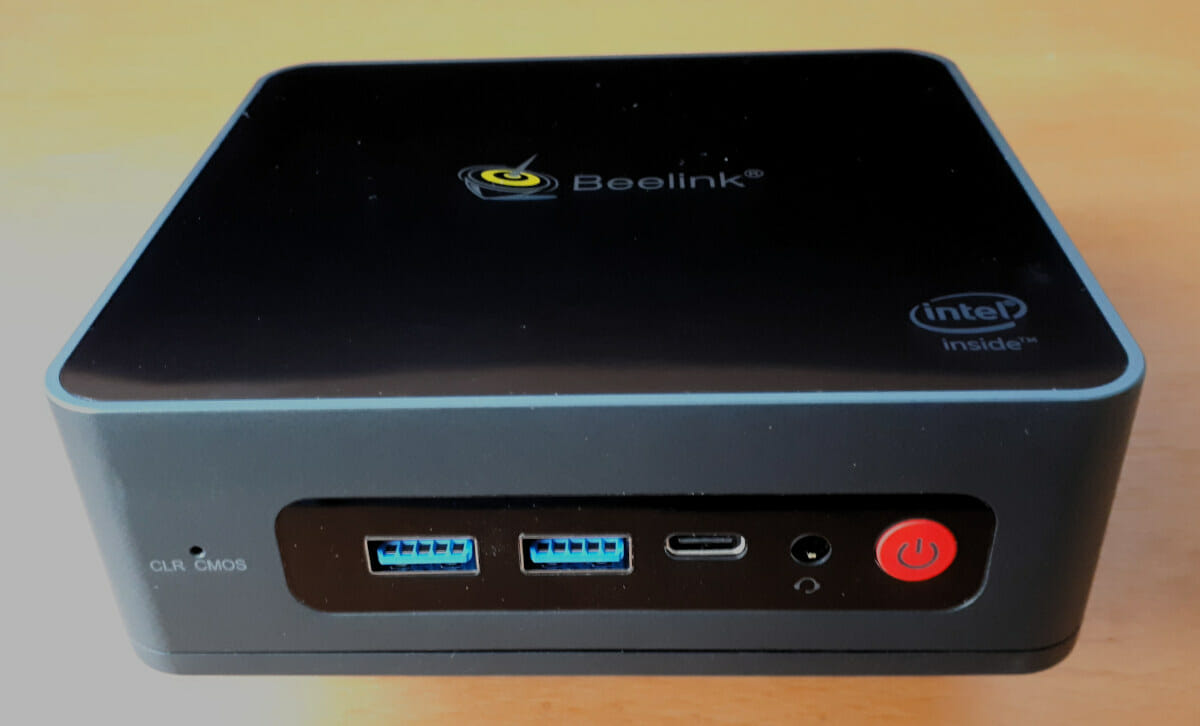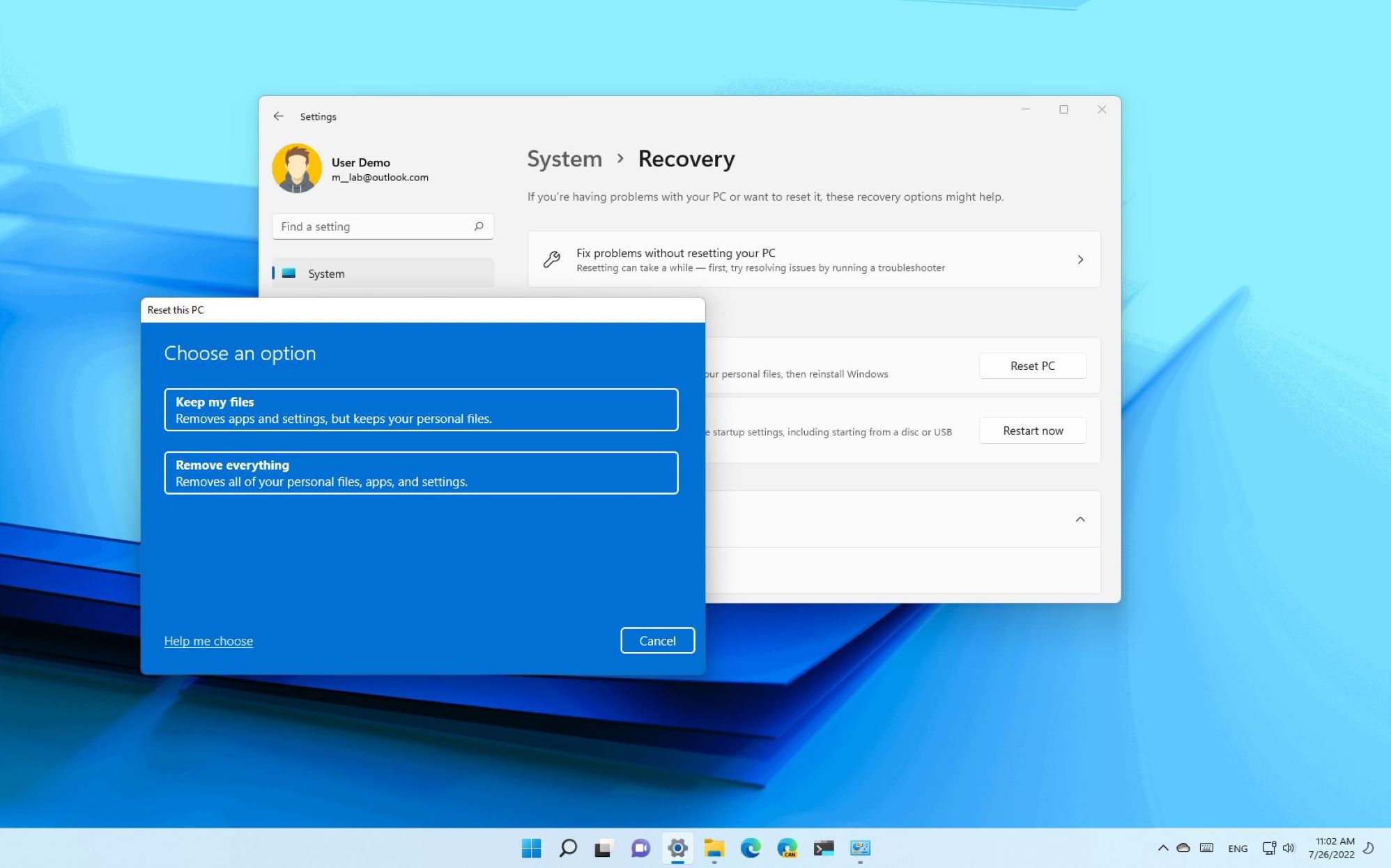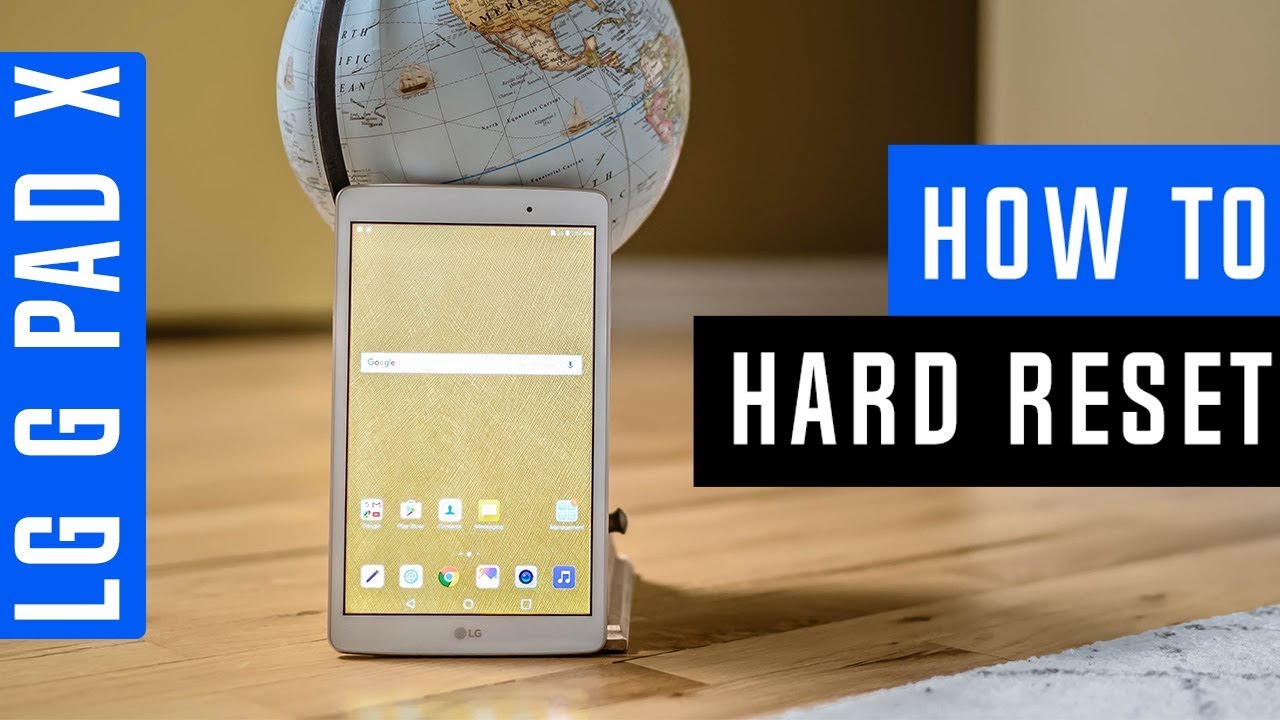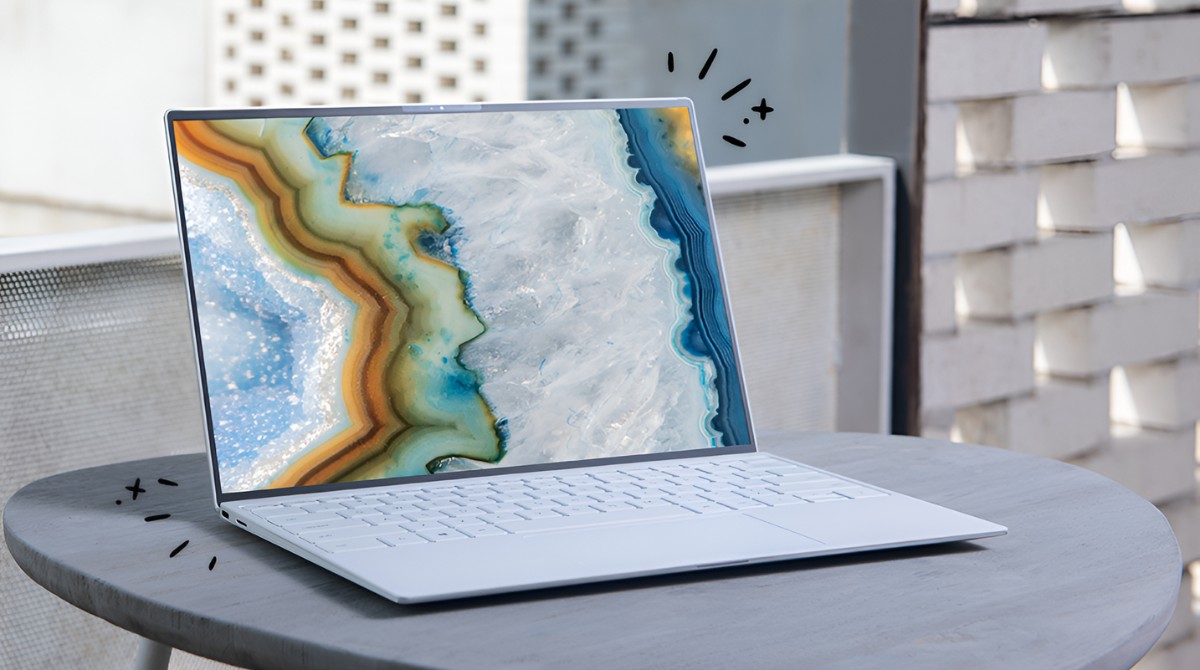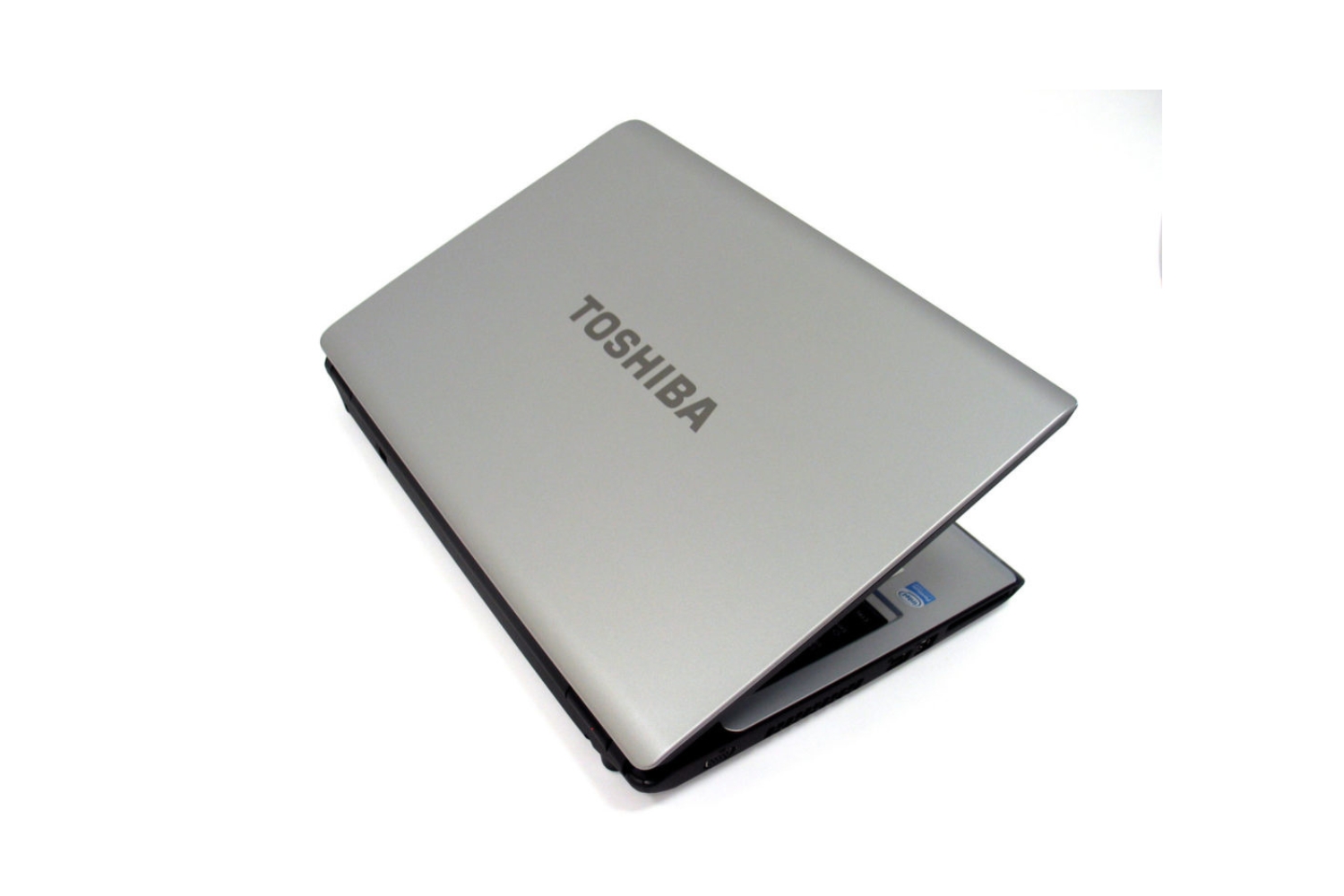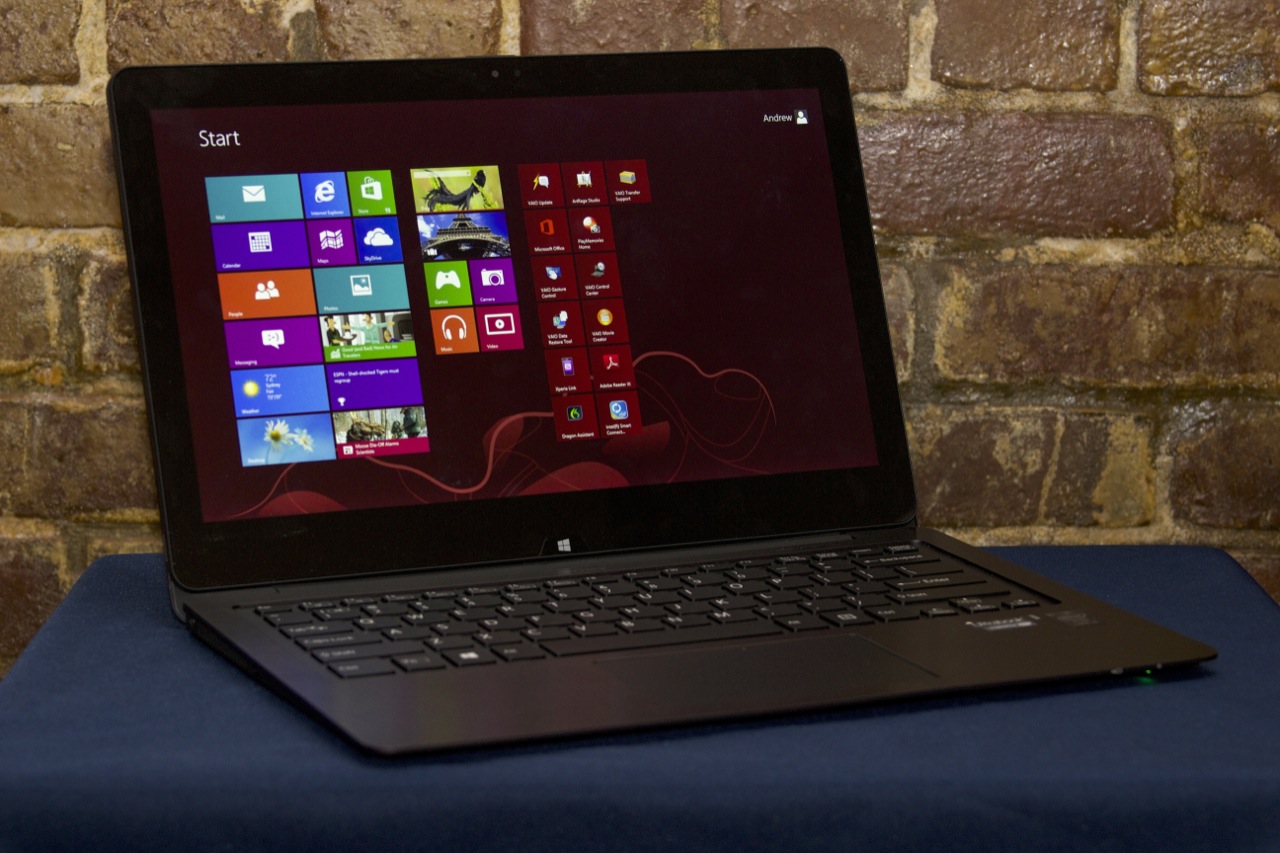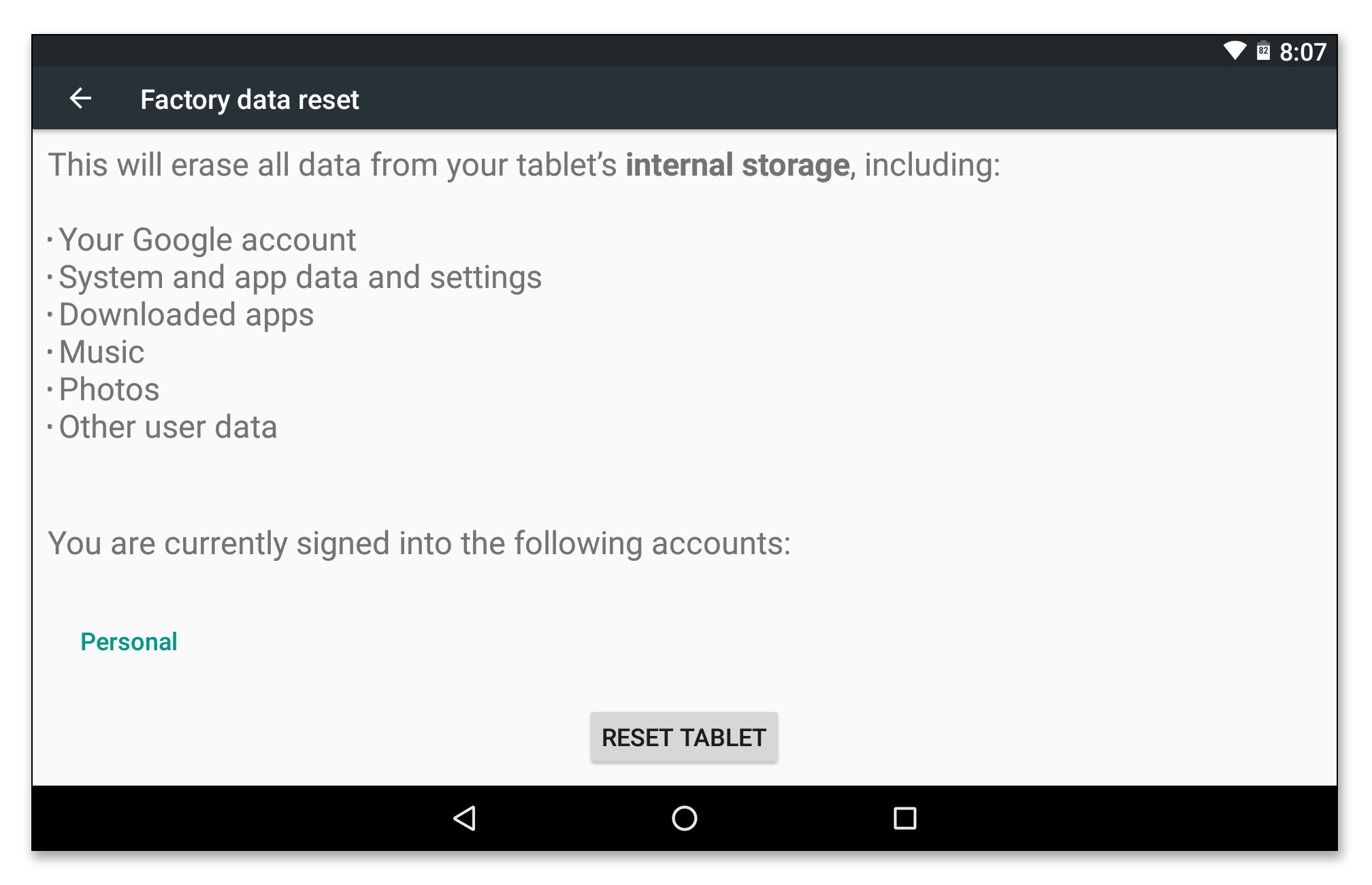Introduction
Welcome to our guide on how to factory reset your PC. Whether you’re experiencing performance issues, dealing with a virus or malware infection, or simply wanting to start fresh, a factory reset can be a great solution to get your computer back to its original state.
A factory reset essentially erases all the data on your computer and reinstalls the operating system, resulting in a clean slate. This means that all your files, applications, and settings will be deleted, so it’s important to back up any important data before proceeding.
In this guide, we will discuss different methods you can use to factory reset your PC, including using the built-in reset feature in Windows, utilizing the recovery partition, and using a Windows installation media. We’ll also provide some troubleshooting tips and common issues you may encounter during the process.
It’s worth noting that a factory reset should be considered as a last resort, as it will remove all personal data and installed software from your computer. Before proceeding, it is highly recommended to try other troubleshooting steps to resolve any issues you may be facing.
Remember that factory resetting will reinstall the original operating system that came with your computer, so make sure that you have all the necessary software installation files and license keys for any third-party applications that you want to reinstall later.
Now that you have a general understanding of what a factory reset entails, let’s dive into the specific methods and steps you can take to reset your PC. But first, let’s cover the crucial step of backing up your important files to ensure that you don’t lose anything valuable during the process.
Why Would You Want to Factory Reset Your PC?
There are several reasons why you might consider factory resetting your PC. Let’s explore some of the common scenarios where a factory reset can be beneficial:
1. Performance Issues: Over time, your computer may become sluggish or experience frequent crashes and freezes. This can be due to a variety of factors, including the accumulation of temporary files, software conflicts, or a cluttered system registry. Performing a factory reset can help alleviate these issues by removing unnecessary files and resetting the system to its original state, potentially improving overall performance.
2. Virus or Malware Infections: If your computer has been infected with stubborn viruses or malware that can’t be easily removed through regular antivirus scans, a factory reset can be an effective solution. By wiping the hard drive and reinstalling the operating system, you can eliminate any persistent threats that may be hidden deep within your system files.
3. System Errors or Corruptions: Sometimes, your computer may encounter system errors or corruptions that cause functionality issues or prevent software from running properly. These issues can be difficult to diagnose and resolve individually. In such cases, a factory reset can restore the operating system to its original state, effectively resolving any underlying errors or corruptions that may be causing the problem.
4. Selling or Donating Your Computer: If you plan to sell, donate, or recycle your computer, performing a factory reset is crucial to ensure that your personal data is completely removed. By resetting your PC, you can protect your privacy by erasing all your files, accounts, and settings, making it difficult for anyone to access your sensitive information.
5. Starting Fresh: Perhaps you simply want to start afresh with your computer, removing all the accumulated clutter, unnecessary software, and personalized settings. A factory reset allows you to return your PC to its original state, giving you a clean slate to customize and set up the system according to your current needs and preferences.
Regardless of the reason, it’s important to note that a factory reset should be approached with caution. It is a irreversible process and will delete all your data and installed programs, so be sure to back up any important files before proceeding. In the following sections, we will explore different methods you can use to factory reset your PC, depending on your specific needs and situation.
Backup Your Important Files
Before proceeding with a factory reset, it’s crucial to back up your important files to ensure that you don’t lose any valuable data during the process. Here are a few steps to help you safely backup your files:
1. Identify Important Files: Take some time to identify the files and folders that you want to back up. These may include personal documents, photos, videos, saved emails, browser bookmarks, and any other data that is important to you. It’s a good idea to create a checklist to ensure that you don’t miss anything.
2. External Storage Device: Connect an external storage device to your computer, such as an external hard drive, USB flash drive, or network drive. Make sure the device has enough storage capacity to accommodate all your important files. It’s also recommended to use a reliable and reputable brand to ensure the safety of your backup.
3. Manual Backup: The simplest method is to manually copy and paste the files and folders to the external storage device. This can be done by navigating to the location of each file or folder, right-clicking on it, selecting “Copy,” and then navigating to the external storage device and selecting “Paste.” Repeat this process for each file or folder you want to back up.
4. File Syncing or Cloud Storage: Another option is to use file syncing or cloud storage services, such as Google Drive, Dropbox, or OneDrive. These services allow you to upload your files to the cloud, where they are securely stored and accessible from any device with an internet connection. Simply install the respective software or app, create an account, and follow the instructions to sync or upload your files.
5. Verify Your Backup: After completing the backup process, take a moment to verify that all your important files have been successfully copied or synced. You can do this by comparing the file sizes and counts on your computer with those on the external storage device or cloud storage service. Additionally, try opening a few files to ensure that they are intact and accessible.
Once you are confident that your backup is complete and accurate, you can proceed with the factory reset process. Having a backup will give you peace of mind, knowing that your important files are safely stored and can be easily restored after the reset.
In the next sections, we will dive into the different methods you can use to factory reset your PC, depending on the options available on your system or the tools you have at your disposal.
Make Sure You Have All Necessary Software and License Keys
Before proceeding with a factory reset, it’s important to ensure that you have all the necessary software installation files and license keys for any third-party applications that you want to reinstall after the reset. Here are a few steps to help you prepare:
1. Identify Essential Software: Take some time to identify the software programs that you rely on for your daily tasks. This may include productivity suites, graphic design tools, video editing software, antivirus programs, and any other applications that are essential for your workflow. Create a list of these programs to ensure that you don’t miss any during the reinstallation process.
2. Locate Installation Files: Locate the installation files for each of the essential software programs on your computer. These files are typically downloaded or provided physically when you first install the software. Look for them in folders such as “Downloads,” “Program Files,” or in the installation media that came with your computer or the specific software.
If you can’t find the installation files, don’t worry. Most software vendors provide the option to redownload the installation files from their websites or offer digital license keys that can be used to reinstall the software. Check the official website of each software program for guidance on how to obtain the installation files or license keys.
3. Backup License Keys: In addition to the installation files, make sure to locate and backup all the license keys or product keys associated with your essential software. These keys are usually required during the installation process to activate and validate your ownership of the software. The keys can often be found in the software’s “About” section or in the confirmation emails or packaging you received when you initially purchased the software.
4. Organize Your Data: While not directly related to software and license keys, it’s a good practice to organize your data before performing a factory reset. Take the time to sort through your files and folders, deleting anything no longer needed and organizing the remainder in a logical and easily accessible structure. This will make it easier to restore your files and get back to work after the reset.
By ensuring that you have all the necessary software and license keys backed up, you can streamline the reinstallation process after the factory reset. This will save you valuable time and help you resume your workflow smoothly with all the essential tools in place.
Up next, we will explore different methods you can use to factory reset your PC, including using the built-in reset feature in Windows, utilizing the recovery partition, and using a Windows installation media.
Method 1: Using the Built-in Reset Feature in Windows
One of the easiest and most convenient methods to factory reset your PC is by using the built-in reset feature in Windows. This feature is available in Windows 10 and can help you reset your computer back to its original state with just a few clicks. Here are the steps to follow:
1. Backup Your Files: Before initiating the reset process, it’s essential to back up your important files, as the reset will delete all your data. Refer to the previous section on how to backup your files to ensure that you don’t lose any valuable information.
2. Open the Settings menu: Click on the Start button in the bottom left corner of your screen and select the “Settings” icon, which looks like a gear. Alternatively, you can use the shortcut key “Windows Key + I” to open the Settings menu.
3. Navigate to the Update & Security section: Within the Settings menu, click on the “Update & Security” option. This will take you to a new window with several tabs on the left-hand side.
4. Choose the Recovery option: From the tabs on the left-hand side, select the “Recovery” tab. This will display various recovery options on the right-hand side.
5. Start the Reset process: Under the “Reset this PC” section, click on the “Get started” button. You will be presented with two options: “Keep my files” and “Remove everything.” Select the option that best suits your needs. If you want a complete factory reset, choose the “Remove everything” option. This will remove all your personal files, applications, and settings.
6. Follow on-screen instructions: Windows will now guide you through the reset process. You may be asked to choose between “Just remove my files” and “Remove files and clean the drive.” The second option is more secure, as it ensures that your deleted files cannot be recovered. However, it will take longer to complete. Select the option that aligns with your preferences and proceed.
7. Wait for the process to complete: Once you have made your selections, Windows will begin the factory reset process. The amount of time it takes will depend on the speed of your computer and the option you chose in the previous step. During this time, your computer may restart multiple times.
8. Set up your computer: After the reset is complete, the initial setup screen will appear. Follow the on-screen instructions to set up language preferences, sign in to your Microsoft account (if applicable), and configure other settings.
The built-in reset feature in Windows is a straightforward and efficient way to factory reset your PC. It ensures that your computer is returned to its original state, free from clutter and issues that may have been affecting its performance.
In the next section, we will explore another method that you can use to factory reset your PC, which involves utilizing the recovery partition on your computer.
Method 2: Using the Recovery Partition
If your computer came pre-installed with Windows, chances are it has a hidden recovery partition that contains the necessary files to perform a factory reset. This method allows you to reset your PC without the need for external installation media. Here’s how you can use the recovery partition to factory reset your computer:
1. Backup Your Files: As always, before proceeding with any reset method, it’s important to back up your important files to ensure they are not lost during the process. Refer to the previous section on how to back up your files for detailed instructions.
2. Access the Recovery Environment: Start by shutting down your computer. Then, turn it on and immediately press the appropriate key(s) to access the boot menu. The specific key(s) may vary depending on your computer manufacturer, but commonly used keys include F11, F12, Esc, or Del. Consult your computer’s documentation or the manufacturer’s website for the correct key(s) to access the boot menu.
3. Select the Recovery Partition: Once you have accessed the boot menu, use the arrow keys on your keyboard to highlight the option that corresponds to the recovery partition. It may be labeled as “Recovery,” “Repair Your Computer,” or similar. Press Enter to select it.
4. Choose the Reset Option: After selecting the recovery partition, you will be presented with a menu of recovery options. Look for an option that allows you to reset your PC or restore it to factory settings. The wording and availability of this option may vary depending on your computer’s manufacturer. Select the appropriate option to proceed.
5. Follow on-screen instructions: The recovery process will now begin. Follow the on-screen instructions to confirm your decision and initiate the factory reset. Depending on your computer, you may be prompted to choose between different reset options, such as keeping your files or removing everything. Select the option that aligns with your needs and preferences.
6. Wait for the process to complete: Once you have made your selections, the recovery partition will begin the factory reset process. This may take some time, as the recovery partition reinstalls the original version of Windows along with any additional software that came with your computer. Be patient and allow the process to finish.
7. Set up your computer: After the factory reset is complete, your computer will restart and present the initial setup screen. Follow the on-screen instructions to configure language preferences, sign in to your Microsoft account (if applicable), and customize other settings.
Using the recovery partition to factory reset your computer is a convenient option, especially if you don’t have access to Windows installation media. It allows you to revert your device to its original state without the need to download additional files.
In the next section, we will explore another method you can use to factory reset your PC – using a Windows installation media.
Method 3: Using a Windows Installation Media
If you have a Windows installation media, such as a USB flash drive or DVD, you can use it to perform a factory reset on your PC. This method is useful if your computer does not have a recovery partition or if you prefer a fresh installation of Windows. Here’s how you can use a Windows installation media to factory reset your computer:
1. Backup Your Files: It’s important to back up your important files before proceeding with the factory reset process. Refer to the previous section on how to backup your files for detailed instructions on how to safeguard your data.
2. Create Windows Installation Media: If you don’t have a Windows installation media, you can create one. Visit the official Microsoft website and download the Windows Installation Media Creation Tool. Follow the instructions provided to create a bootable USB flash drive or DVD containing the Windows installation files.
3. Boot from the Installation Media: Insert the USB flash drive or DVD containing the Windows installation files into your computer. Restart your computer and press the appropriate key(s) to access the boot menu. Commonly used keys include F11, F12, Esc, or Del. Consult your computer’s documentation or the manufacturer’s website for the correct key(s) to access the boot menu. Select the option that allows you to boot from the installation media.
4. Install Windows: Once you have successfully booted from the installation media, the Windows setup will begin. Follow the on-screen instructions to select language preferences, enter the product key (if prompted), and choose the version of Windows you want to install. When you reach the “Where do you want to install Windows?” screen, select the appropriate drive on which to install Windows. Choose the option to “Delete” or “Format” the existing partitions to remove all data on the drive.
5. Complete the Installation: Continue following the on-screen instructions to complete the installation. This will include configuring time zone settings, creating a user account, and customizing other preferences. Allow the installation process to finish, and your computer will reboot.
6. Set up your computer: Once your computer has restarted, follow the on-screen instructions to set up your device. This will involve configuring privacy settings, connecting to a network, and choosing preferences for apps, themes, and other settings.
Using a Windows installation media to factory reset your PC allows you to start with a clean installation of Windows. It provides a fresh start without any previous files, programs, or configurations.
Remember to reinstall any third-party software programs and restore your personal files from the backup you created earlier. This method is also a good option if other reset methods have failed or if you want complete control over the installation process.
In the next section, we will discuss common issues you may encounter during the factory reset process and provide some troubleshooting tips to help you overcome them.
Common Issues and Troubleshooting Tips
While performing a factory reset on your PC, you may encounter some common issues. It’s important to be aware of these potential obstacles and have some troubleshooting tips on hand to overcome them. Here are a few common issues and tips to help you navigate through the factory reset process smoothly:
1. Reset Option Not Available: If you’re unable to find the reset option in the Windows Settings or recovery partition, it’s possible that your computer manufacturer has disabled or removed this feature. In such cases, check your computer’s documentation or the manufacturer’s website for specific instructions on how to perform a factory reset.
2. Recovery Partition Not Accessible: If the recovery partition is not accessible or has been corrupted, you won’t be able to use it for a factory reset. In this situation, you can try creating a Windows installation media (as discussed in the previous section) or contact your computer manufacturer for assistance in restoring the recovery partition.
3. System Restore Points Not Available: If you’re running into issues during the factory reset process, it’s worth checking if your system has any available restore points. System restore points can restore your computer to a previous state and might address your reset problems. To access system restore points, search for “System Restore” in the Windows search bar and follow the on-screen instructions.
4. Error Messages during Reset: Sometimes, you may encounter error messages or unexpected issues during the reset process. One common error is the “There was a problem resetting your PC” message. If you encounter such errors, try restarting your computer and attempting the reset again. If the problem persists, consider using a different reset method or seeking assistance from a professional.
5. Drivers and Updates: After performing a factory reset, it’s important to reinstall the necessary drivers and update your Windows operating system to ensure optimal performance. Visit your computer manufacturer’s website to download and install the latest drivers specific to your model. Additionally, go to the Windows Update settings and check for the latest updates for your operating system.
6. Application Compatibility: After a factory reset, you may need to reinstall your applications. However, it’s possible that some applications may not be compatible with the version of Windows you have installed. Check the software vendor’s website or contact their support for compatibility information and updated versions if necessary.
If you encounter any issues during the factory reset process that are not covered here, consult your computer manufacturer’s documentation or website, or reach out to their support team for assistance. They will have specific troubleshooting steps and guidance tailored to your computer model.
With these common issues and troubleshooting tips in mind, you’ll be better prepared to overcome obstacles and successfully complete the factory reset process. Afterward, you can enjoy a fresh start with your PC.
In the final section, we will wrap up the guide and provide a summary of what we’ve covered throughout the article.
Conclusion
In this guide, we have explored different methods you can use to factory reset your PC. Whether you choose to utilize the built-in reset feature in Windows, the recovery partition, or a Windows installation media, each method provides a way to restore your computer to its original state.
Before initiating a factory reset, it is crucial to backup your important files to ensure that you don’t lose any valuable data. This can be done by manually copying files to an external storage device or utilizing cloud storage services. Additionally, it’s important to make sure you have all the necessary software installation files and license keys for any third-party applications you want to reinstall after the reset.
Throughout the guide, we have discussed some common issues that may arise during the factory reset process and provided troubleshooting tips to overcome them. These include issues such as the reset option not being available, recovery partition inaccessibility, error messages, and driver compatibility. By being aware of these potential obstacles and following the troubleshooting steps, you can minimize any disruptions during the reset process.
Remember, a factory reset should be considered as a last resort, as it completely erases all your data and installed programs. Before proceeding with a factory reset, it’s always a good idea to try alternative troubleshooting steps to resolve any issues you may be facing. However, if you’ve exhausted all other options and are confident that a factory reset is the best course of action, these methods outlined in this guide can help you achieve a clean slate and restore your PC to its optimal performance.
We hope this guide has been helpful in assisting you with the factory reset process. Remember to follow each method’s specific instructions and consult your computer manufacturer’s documentation or support if needed. By taking the appropriate precautions and following the steps outlined in this guide, you can successfully factory reset your PC and enjoy a fresh start with your computer.







